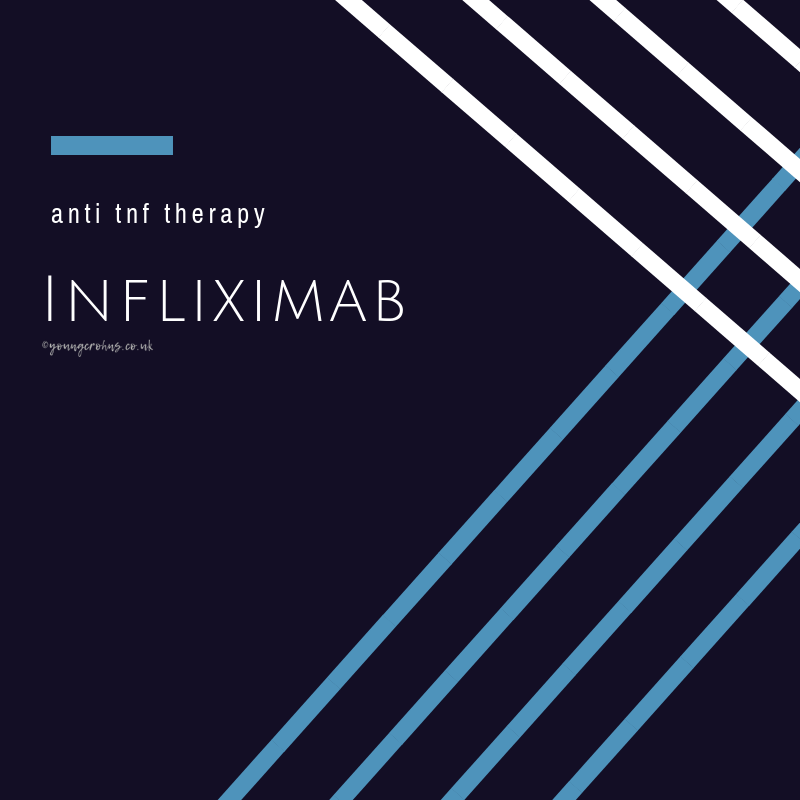
IBD Basics: Aminosalicylates – 5ASAs
Disclaimer: This information is based on my own research into this particular aspect of IBD as well as some personal experience and should not be used as medical advice or a diagnostic tool. The suggestions given within are taken from sources laid out in the references header. If you seek advice regarding the things you experience within your own disease, please contact your IBD team for medical advice.
If you are looking for the entire ‘IBD Basics’ series, you can find them all here.
What are 5 ASA’s & Why are they important?
Aminosalicylates – or 5ASAs – are a type of medication used to treat both Crohn’s disease and Ulcerative Colitis; but have been proven to be more effective in UC to independently induce and maintain remission in mild to moderate UC. They work by reducing the inflammation in the mucous lining of the bowel, which is better achieved in UC due to the location of the disease to just the colon. Whilst 5 ASA’s can be used in Crohn’s disease, they are only helpful in controlling mild inflammation and symptoms, and are often needed to be used in conjunction with other medications to control inflammation to be best effective.
They can be very helpful in getting UC patients treated for their flare ups and can reduce dependency of long-term steroids. And whilst they can help in UC, they have limited effectiveness in CD due to inflammation being more widespread and existing outside of the colon.
Why are they used to treat IBD?
5-ASAs can be taken orally by swallowing a tablet, capsule or granule, or topically through the anus as a suppository or an enema. The best form for you will depend on how severe your condition is and how much of your colon is affected. A combination of oral and rectal treatment is often more effective than one approach alone.
Types of Oral:
- Sulphasalazine: is the first and mostly widely used form of 5 ASA. It is still used but patients do experience side effect due to the sulpha component.
- Mesalazine (brand names such as Asacol, Ipocol, Octasa, Pentasa, Salofalkand Mezavant). This 5-ASA does not contain a sulpha group. Approximately 90% of those with an intolerance to sulphasalazine will be able to tolerate mesalazine. This drug comes in different formulations which target slightly different parts of the digestive system:
Asacol, Ipocol, Octasa and Salofalk tablets and granules have a special covering, known as an enteric coating, that dissolves at a certain pH (acidity) in the gut. Mesalazine must be coated or placed in special capsules to ensure drug delivery to the intestine or colon. The difference in coating affects where the medication is released in the intestine or colon and how frequently the medication needs to be taken.
Pentasa comes in tablets and granules, which work throughout the gut.
Mezavant tablets release their mesalazine as they pass through the colon.
- Olsalazine (brand name Dipentum) and Balsalazide (brand name Colazide). These 5-ASAs are also released in the large intestine.
In many situations, rectal therapies of 5-ASA can dramatically improve control of IBD. Rectal administration delivers a high dose targeted exactly where it is needed and avoids systemic exposure. In many cases, rectal administration is used in conjunction with oral therapies for additional symptom improvement:
- Suppositories: deliver mesalazine directly to the rectum. A high proportion of patients with proctitis (inflammation in the rectum) will respond to mesalazine suppositories.
- Enemas: allow mesalazine to be applied directly to the left colon, reaching higher than the suppository alone.
How are they used to treat IBD?
The dose you take will be decided by your doctor. It usually depends on which brand of 5-ASA you are taking, as well as how active your disease is. The dose may be increased or decreased depending on how you respond.
Unless otherwise instructed by your doctor, typical doses to treat a flare-up are:
- Granules: 1 – 2 sachet of granules (1 – 4g depending on the brand) a day, preferably in the morning
- Enemas: 1 -2 enemas (1 – 2g each depending on the brand) a day. These are usually given in single or twice daily doses and can provide substantial relief from the urgency and frequency of bowel movements. A suppository is inserted into the rectum and does not need to be passed or removed. A combination of rectal and oral therapies may be more effective than pills alone.
- Suppositories: 1-2 suppositories (0.5–1.5 g each depending on the brand) up to three times a day. Up to 80% of patients with left-sided colon inflammation benefit from using this therapy once a day. Enemas are liquid and should remain in the colon for at least 20-40 minutes.
- Tablets: 1.5 – 4.8g a day depending on the brand.
You will usually remain on a maintenance dose to help keep your disease under control. This dose may be slightly lower than the dose you started with.
This great image from IBD Clinic gives a brilliant visual representation of where each type of 5 ASA is best suited:

Side Effects & Important information
- 5 ASAs can take up to three weeks to feel any benefit.
- It is important to not alter the dose of your medication without your IBD teams involvement. It is possible for a ‘flare up plan‘ to be established; in which you would be able to increase the dose when symptoms of a flare up begin, and reduce down when the symptoms subside.
- You will probably be advised to take 5-ASAs long-term to keep your condition under control and reduce the risk of flare-ups. It is possible to be on them for several years as a maintenance therapy without any issues.
- They are an effective treatment option for UC, with 7/10 responding well to the medicine. While they may help flare ups of mild Crohn’s Disease, there is little evidence that they are effective in maintaining remission. Due to this fact, 5-ASAs are not recommended for severe Crohn’s.
- You will need to have your kidneys checked before beginning this medication and your kidney function should be regularly checked whilst on 5 ASAs too. Those with known kidney problems should not take any 5 ASAs.
- You will also have your blood monitored whilst on this medication; first at three months to check any unwanted side effects and then annually. If you are take Sulphasalazine, you will be monitored more regularly.
All 5-ASAs may cause:
- headache
- nausea
- abdominal pain and cramping
- loss of appetite
- vomiting
- rash
- fever
- And in less than 1% of patients, they can cause diarrhea; which may be difficult to distinguish from increased IBD activity.
Specific issues with individual types of 5 ASA include:
- Sulphasalazine: A decrease in sperm production and function in men can occur while taking sulphasalazine. However, sperm count becomes normal after the medication is discontinued. It has been rarely associated with inflammation of the pancreas (pancreatitis). Sulphasalazine can also reduce the body’s ability to absorb folates (B vitamins) which are essential for blood cell formation. Some people taking sulphasalazine may need a folic acid supplement. Patients with sulfa-allergies should not use sulphasalazine at all.
- Mesalazine: Pancreatitis is a rare side effect of mesalazine use.
- Olsalazine: Diarrhea is the most common side effect. It can be reduced by taking the medication with food. Rare side effects are hair loss, pancreatitis, or inflammation of the tissue surrounding the heart (pericarditis).
Rarely, 5-ASAs can cause problems with the kidneys, liver, lungs and pancreas. Tell your doctor immediately if you develop:
- Chest pain or rapid heartbeat
- Swelling of the face, lips or throat
- Wheeziness or difficulty breathing
- Unexplained bleeding, bruising or skin rashes
- Changes in the colour or amount of urine you produce.
Your doctor should talk through the risks and benefits before you start 5-ASAs. Let your doctor or IBD nurse know about any new symptoms you develop, whenever they occur.
My Experience
I was initially diagnoses with Crohn’s Colitis so started on Pentasa alongside my Prednisone back in late 2011. And whilst I took my medication and experienced some of the side effects; the full effects of a severe flare up meant my diagnosis soon went on to become that of Crohn’s Disease – when my full colonoscopy showed activity in my small bowel, furthered by an MRI scan in early 2012 too. I moved on to Humira for 18 months before I would be back on a 5 ASA – Mesalazine. I trialed this one for 4 months whilst we waited to see if my IBD would settle down. Unfortunately, my disease – despite our best efforts to keep me off strong and powerful medications – progressed and biological treatments have been the only thing to really give me the relief with my symptoms.
Even though it wasn’t an appropriate or successful treatment option for me, I did blog about it:
The Plan – September 2011
Swings and Round-of-sorts – March 2013
Obsessed by Abscess – May 2013
Have you had to take 5 ASA’s for your IBD? Have you found them useful as a treatment option? Have you any bad experiences, side effects or reactions?
Do you have any questions or queries? Or just want to share your own experiences? Leave me a reply or tweet me @sapphire20 or find my blog page on Facebook!

Sources:
Crohn’s and Colitis UK: Aminosalicylates 5 ASAs (pdf)
Crohn’s Colitis Foundation: Aminosalicylates (pdf)
British Medical Journal’s GUT: Therapy Update – Which 5 ASA
IBD Relief: Medication for IBD: 5 ASAs
IBD Clinic: Treatment with 5 ASAs



